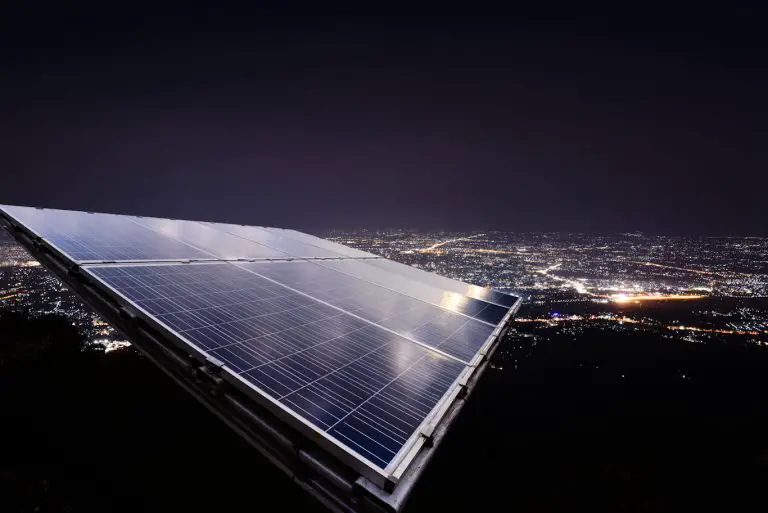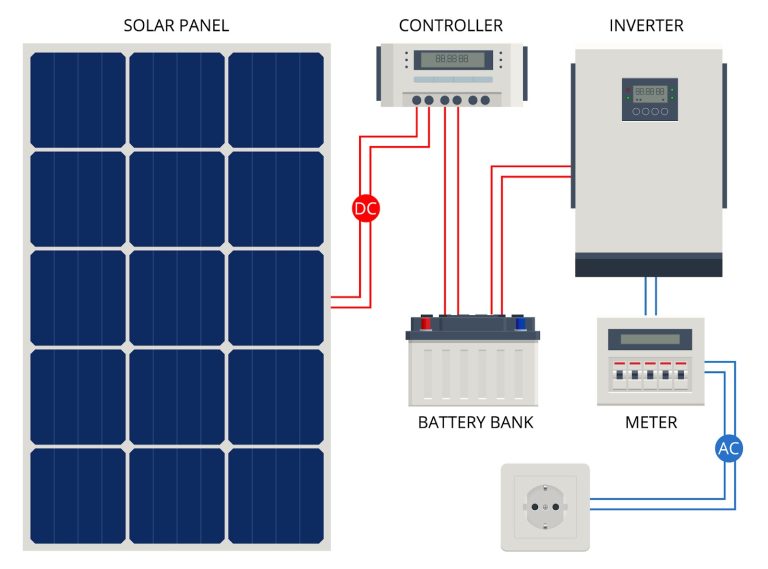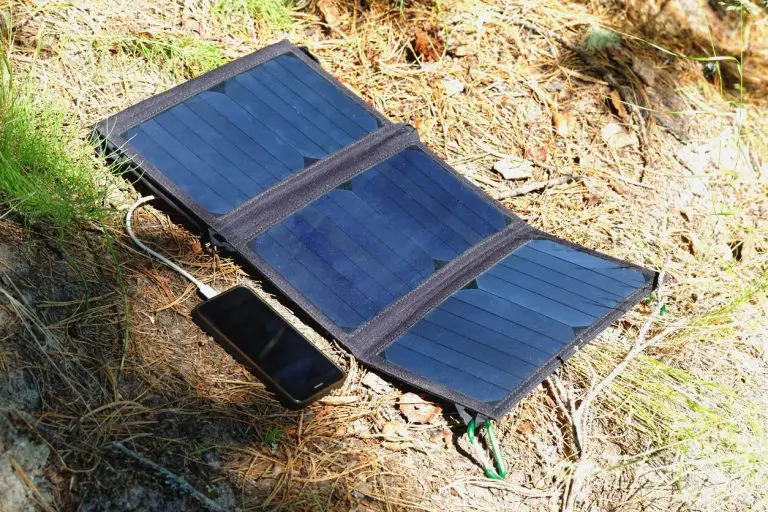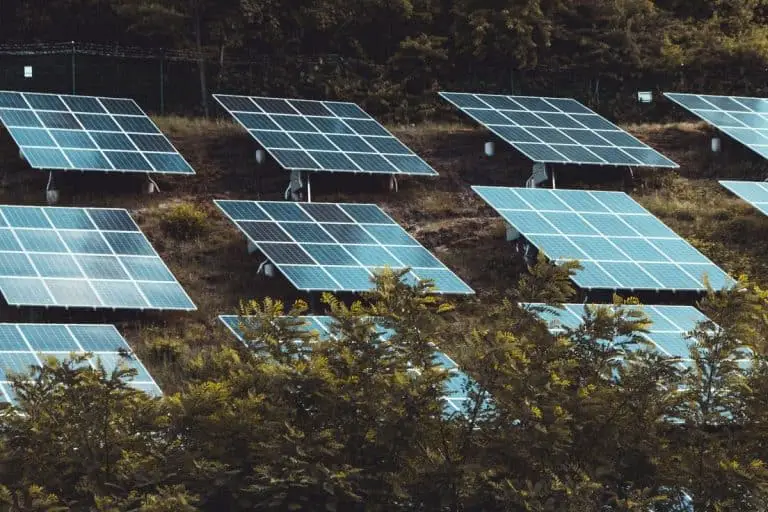How To Run A Microwave On Solar Power
In general, almost all appliances can be powered by solar energy. So if you know how much energy you need to power the microwave (and the other things you need), you could figure out how many solar panels you need to buy and install and the size of the battery bank.
Solar energy can be used to power microwaves, although you have to have a proper setup since this household appliance can consume quite a lot, especially when starting up.
This article goes over all the details and things you need to know to power a microwave with solar energy.
Can I Use Solar Panels To Run A Microwave?
Like other house appliances, microwaves can be powered by solar energy collected through solar panels, whether portable or fixed. Those planning to go entirely off the grid must power even a microwave if they wish to use it for their food.
But microwaves can be used on RVs, too, using solar panels mounted on the roof or portable solar panels. In many instances, RVs have battery banks that are recharged by solar panels and then used to power all the appliances, including microwaves.
With modern technological advances, it is possible to find smaller microwaves, such as 12V or portable ones. They are made in a way to be easy to carry and to consume as little as possible. Those microwaves can be used for camping, trucks, RVs, or cars.
How Many Watts Does A Microwave Consume?
Microwaves consume based on their size, power, and model. The types of microwaves you can find can be classified as follows:
- Smaller or compact microwaves – between 600 and 800 watts
- Standard or common microwaves – between 800 and 1500 watts
- Bigger and commercial microwaves – over 1000 watts
Smaller or more compact microwaves are typically used for RVs, outdoor activities, or hotel rooms. Standard microwaves are generally used in households, while commercial microwaves are usually found in restaurants.
In the worst case, if you are using a 1500 watts microwave, and if you use 250 watts solar panels, you would need at least six panels to get the microwave going (started). In addition, the microwave will consume energy for every minute it runs.
Therefore, it is necessary to estimate how long you will need to operate the microwave daily to know exactly how many panels and batteries you require. But generally, a microwave will not run for more than 30 minutes daily.
How To Estimate Your Microwave Energy Consumption
If you want to estimate your microwave consumption, you can use a simple mathematical calculation.
For example, if you use a 1000 watts microwave, you will consume 1000 watts if you run the microwave for one h (not counting the energy required at the start-up).
If you run the microwave only for 10 minutes, you have to multiply 1000 watts for ⅙ of an hour:
1kW x 1/6th = 0.16 kWh every 10 minutes
If you are using a 500 watts microwave, you are looking to consume half of the above number.
However, if you have another type of microwave that consumes 600, 800, or 1200 watts, then you can do the easy calculation explained here to determine how much your microwave consumes.
Other Factors To Consider When Determining A Solar Microwave Energy Consumption
While the above calculations can give you a guideline on how much your microwave consumes, there are other factors to consider. For example, solar panels are made of solar cells responsible for converting sunlight into electricity.
Solar cells are most effective when the sun is bright on a perfect day. But, there are also days when the sky is filled with clouds, and the solar panels cannot harness as much sun and convert as much electricity.
Although you have made all the proper calculations and come up with the exact number of solar panels to power your microwave, the calculation can still come up short on some days.
However, most people have battery banks, so they can still power their appliances if that happens.
Another factor to consider is the type of energy produced by solar panels. Solar panels produce Direct Current (DC), but most microwaves run on AC (Alternating Current). For this reason, you need to get an inverter too.
The inverter makes it possible to convert DC into AC. However, consider that when you use an inverter, some energy is lost on the way. So while you did a perfect calculation, you might need more solar panels to get the intended results.
In summary, when you do your calculations to determine how many solar panels you need, take into consideration the following:
- The climate (clouds, etc.)
- The daily usage
- The wattage of the microwave
- The necessity to use an inverter
- The general efficiency of the solar panels
- How many other appliances are you powering
- The start-up power required
Most appliances consume more than what their label or manual says it does. And when starting up, they can use 3 or 4 times their rated power requirements.
So it is safe to say that you will come up short in any calculation done using the wattage on the paper provided by the manufacturer.
How many solar panels does it take to run a microwave?
Suppose you want a fast answer to know the number of solar panels required to operate a microwave. In that case, you can get an idea with the following grid:
| Microwave wattage | Number of 250 watts panels |
| 600 | 2-3 |
| 800 | 3-4 |
| 1000 | 4 |
| 1500 | 6 |
Most probably, you can get way more solar energy collected with the solar panels than the one you will use for the microwave since you will operate the microwave only for a few minutes each day. A battery system will collect the extra solar energy, which can be used later, or at night.
What inverter size is needed to run a microwave?
An inverter will convert the Direct Current produced by the solar panels into Alternating Current necessary to power appliances. In general, the electricity that comes from the wall sockets in the house is AC, while you can expect the power coming out of a battery or solar panel as DC.
Without an inverter, you will not manage to make your appliances work. If you want to get the correct size inverter, you have to consider the start-up power of your microwave, and if you are using other appliances, eventual power surges throughout the day.
For example, if you have a 1000 watts microwave, it can draw up to 3 times its wattage at the moment of start-up. In this case, the microwave can require 3000 watts for a few seconds before running at its indicated wattage (the one stated on the label).
The inverter needs to handle the start-up draw and the running energy consumption. When deciding on an inverter, verify what power surge can accommodate. For example, a 2000-watt inverter could handle a 3000 watts power surge and the 2000 running watts.
If unsure, always verify the specifications at the moment of purchase.
Running watts and starting watts, what is the difference?
To ensure you get a suitable inverter and the correct number of solar panels, you should know the difference between running watts and starting watts and how to figure them out on a microwave.
Starting watts (surge or peak watts) are the extra watts required to get the microwave started. In the beginning, when you push the start button, the microwave will consume way more electricity to get going, but only for a few seconds.
After that, the microwave will consume stable energy (running watts). Starting watts is essential since if you do not consider them, you might not manage to get the microwave going.
Starting watts are way higher than running watts. So when you plan for solar panels or inverters to make your microwave work, you should consider getting a higher wattage inverter than the one the microwave needs to run, and so for the solar panels, you plan to install.
If you have more than one appliance powered by solar panels and are worried about the starting wattage required, you could start the different appliances you have at other times.
You should start with the one that draws more energy at startup.
How To Figure Out The Starting Watts Of Your Microwave
There are different ways to determine the starting watts of your microwave. Here are the main ones:
- Ask the manufacturer (read the manual, labels, etc.)
- Using a clamp meter
In general, you can find the details of the starting watts when you buy the microwave in the specifications labels or manuals. If you can’t find it, as a last resort, you could contact the manufacturer.
Alternatively, a clamp meter can measure the energy flow at the start-up. Once you connect the meter and start the microwave, you will get a reading in amps. At this point, you have to multiply the amps by the voltage to get the wattage.
Can You Run An Appliance Directly From A Solar Panel?
It is generally possible to run appliances directly from solar panels if the machine runs with DC. However, most appliances, including the microwave, run on AC, therefore making it impossible to connect a solar panel directly.
If your appliances run on AC, you must get an inverter to use solar energy.
Which Size Of Battery Should I Use To Run A Microwave?
Microwaves are often used in RVs, which are powered by solar energy. Usually, solar energy is accumulated first on solar battery banks, and the appliances draw energy from the batteries.
In general, a microwave can require up to 150 amps to function. Sometimes less, depending on the model and the wattage. Therefore, if you get a 250 ah deep cycle battery, you can run a microwave without any problem.
The formula to calculate the battery size (amps) is the following:
- microwave watts/battery volts = amps (battery size)
For example; if you got a small microwave for your RV with a wattage of 600, the calculation is the following:
600/12v = 50 amps
Remember that the inverters are not 100% effective, so you should always choose a bigger size of battery than the one you calculated. You should also remember the starting watts utilized by the microwave as an additional motive to get a larger battery.
A microwave can draw a lot of energy from a battery and wear down the charge fast. So even if the microwave runs for a few minutes daily, it can significantly impact the batteries.
For this reason, if you plan to use a microwave, it is better to use a lithium battery since it can discharge up to 90%. Acid batteries can do their job for appliances and devices that do not consume as much.
How To Choose The Best Microwave To Use With Solar Energy
When you are looking for a microwave better suited to be powered by solar energy, there are a few factors to keep in mind. The main things to look at are:
- Space you have available
- Size of the microwave
- Wattage
- Quality
- Price
- Features
- Noise levels
- Safety
Size
Since you have to power the microwave with solar energy, the size is essential because it can determine the energy consumption. Still, it is also essential because it has to fit in your RV, where the space is already limited.
If you have to carry the microwave outdoor, a compact, lightweight appliance is the best. Smaller microwaves consume less and are better suited to connect solar panels or batteries. Wattage is the next most significant consideration.
Wattage
The higher the wattage, the best you can expect the microwave to perform. The wattage determines the speed of cooking and how evenly it heats the food. However, the higher the wattage, the higher the price and the energy required.
When it comes to solar appliances, the wattage should be as low as possible. However, you compromise in quality and efficiency with a low-wattage microwave. Ultimately, it depends on what type of food you need to cook and how much you use it.
Reliability
A lower wattage means a slower microwave and less reliability. Quality and reliability are to be considered because of security and saving money over a long period. A microwave can last for a long time, generally around ten years.
You can find reviews from other customers to determine the actual durability of a microwave. Ideally, you do not want to replace it too often.
A good compromise between price and quality for those who cannot invest much in a microwave is the best option; otherwise, spending a bit more can be a good investment for the future.
Features
Some of the best microwaves have features you need, like programmable settings, preset cooking options, and more.
Although the noise level is not that essential since microwaves run only for a few minutes, you could ask the vendor to do a test run to verify the appliance’s noise.
Safety
Last but not least, consider the safety options, such as kid’s safety measures and fire hazards.
Ventilation
When cooking food with a microwave, there can be various smells and fumes. You can check the specifications to determine if the ventilation is good enough.
Presence of an inverter
Since you are using the microwave with solar energy, you could try to find microwaves with an inverter already built-in to the device. Inverter technology allows you to cook foods evenly and at lower temperatures.
They are not so common, but such a microwave allows more cooking options.
In the final analysis, once you have considered all the above points, you can come up with the microwave that fits better your need, but minding the same time, energy consumption, features, quality, and price.
If you use the microwave a lot because you go out RVing with the entire family, spending more money on it to have more quality and durable product can be an excellent investment for a more extended period.
Frequently Asked Questions
What Appliances Can You Power By Solar Panels?
Providing you have the correct wiring and a powerful enough solar system, you can power virtually any appliance using solar panels. You can power even washing machines, microwaves, and refrigerators with solar panels.
Can You Run A Microwave In A Vehicle?
Sometimes, it is possible to run a microwave in a vehicle. Still, it is necessary to have the proper wiring, a suitable inverter, and a compatible microwave that doesn’t consume too much energy.
What Is A Convection Microwave?
A convection microwave is an appliance that cooks food differently than a typical microwave. It uses a high heat temperature and a fan to circulate the air instead of electromagnetic waves.
This difference allows more cooking options than otherwise would not be possible. For this reason, they are typically more expensive.







